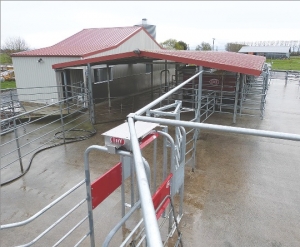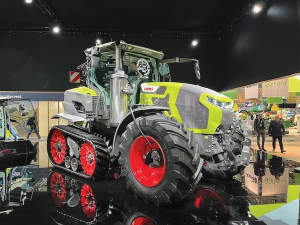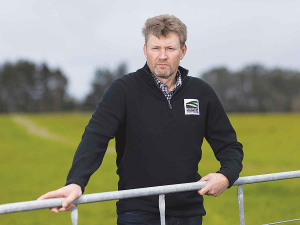Gavin Weal, of Te Awamutu, David and Glenys McConnell, of Hamilton, and Simon and Joanne Belton, of Matamata, have turned to automated systems for best use of labour on their 200-300 cow farms.
McConnell bought three Lely Astronaut automatic milking machines after moving from a 600 cow, 200ha property near Gore to a 71ha property 6km from the centre of Hamilton. “I wanted a change. I wanted a warmer climate and though I still enjoy farming I’m tired of milking twice a day.”
McConnell says setup was not difficult and he was able to start using the automatic milking system in August after the deal was finalised in June. “I just filled in the herringbone pit and retrofitted the existing herringbone shed.”
Some 240 of his spring and autumn calvers were bought from Southland and McConnell culled two cows even though he didn’t select stock specifically for the robotic milker.
Most stock adapted in one-five days to the automatic milking; the longest was ten days. McConnell found it hardest to adapt himself. “The first month was a trial getting my head around how the system worked and the cowflow. I had to reeducate myself.”
McConnell’s shed management now consists of a 20 minute hose down and equipment check twice a day. “I don’t go out till 7.30-8am. I could get all the farmwork done in 90 minutes a day with a one person unit.”
Somatic cell counts averaged between 20,000-70,000 and got up to 130,000 with autumn calvers.
While somatic cell counts are higher than normal now for Te Awamutu farmer Gavin Weal he expects it to be a temporary measure.
Weal in early May installed three Lely Astronaut milking units in a new dairy plant and is now training cows how to use the machines. Some did hold their milk when the process started which did put stress on the SCC but now they’re relaxed and milking right out. That’s bringing the SCC down pretty quick.”
Weal installed the automatic milkers to allow him to continue farming while stepping back to leave day to day running of the farm to his son Stuart.
He has downsized from a 110ha, 300 cow farm to a 71ha, 230 cow farm and will reduce his labour pool from three to one and a half.
“I’m slowing up a bit now. I’ve been milking cows for 35 years and my son works on the farm so this will be something he can take over.”
With a washdown time of 10 minutes twice a day compared to a two -2.5 hour milking through their 28 bale herringbone, Weal is already seeing the benefits. “And that will get better as cows get more used to the system and produce less effluent.”
Simon and Joanne Belton, at Matamata, moved to automated stock management after a rapid expansion. They run a 97ha, 330 cow operation and had recently changed from spring calving to split calving.
Calf rearing occupies Joanne one-two hours daily, too long to do without the automated calf feeder, especially because she works off the farm three days a week.
“I do the bulk of the work with the calves in the morning before I go to work; and I can now call into the sheds in my office clothes at the end of the day and check everything is okay, and if so, go home for the evening.
“This isn’t to say that I don’t spend time with the calves. I still have contact with them when putting other supplements out to them, and they are just as friendly as they were on the more manual system.”
She says she has noticed a more even growth rate of calves now they have moved to an automated system. “With the automatic calf feeder every calf will get their entitlement of milk, and those calves that gorge will not benefit from another calf’s entitlement of milk. The system also warms the milk.
“There is a more even growth this year and we have more time to put into other things.”
www.lely.com
















